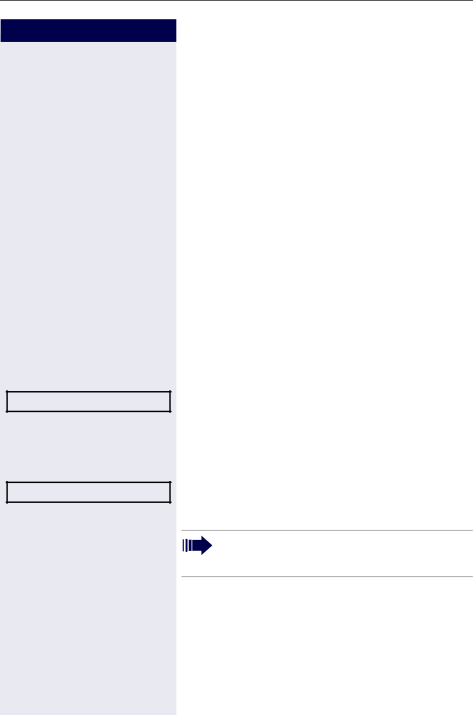
Enhanced phone functions
Step by step
^
or
^
j
Open door?
N
*61=Door opener?
j
j
Answering calls from the entrance telephone and opening the door
If an entrance telephone has been programmed, you can use your telephone to speak to someone at the ent- rance telephone and to activate a door opener.
If you have the proper authorization (contact your ser- vice personnel), you can activate the door opener, en-
abling visitors to open the door themselves by entering a
Speaking to visitors via the entrance telephone
Prerequisite: Your telephone rings.
Lift the handset within thirty seconds. You are connec- ted to the entrance telephone immediately.
Lift the handset after more than thirty seconds.
Dial the entrance telephone number.
Opening the door from your telephone during a call from the entrance telephone
Confirm the option shown.
Opening the door from your telephone without cal- ling the entrance telephone
Press the key shown.
Select and confirm the option shown.
Dial the entrance telephone number.
Special features must be taken into considerati- on if your telephone operates with HiPath 5000 (system networking via PC network) Æ page 96!
Opening the door with a code (at the door)
After ringing the bell, enter the
35